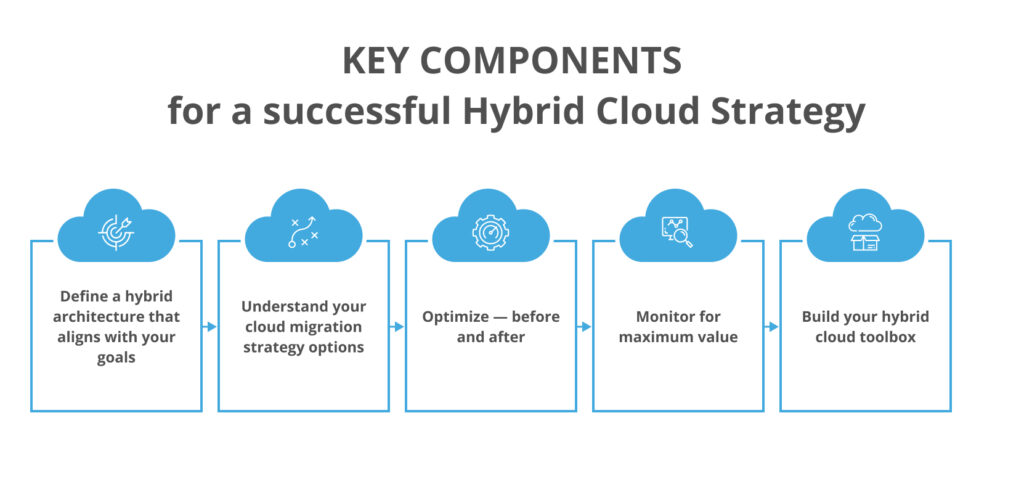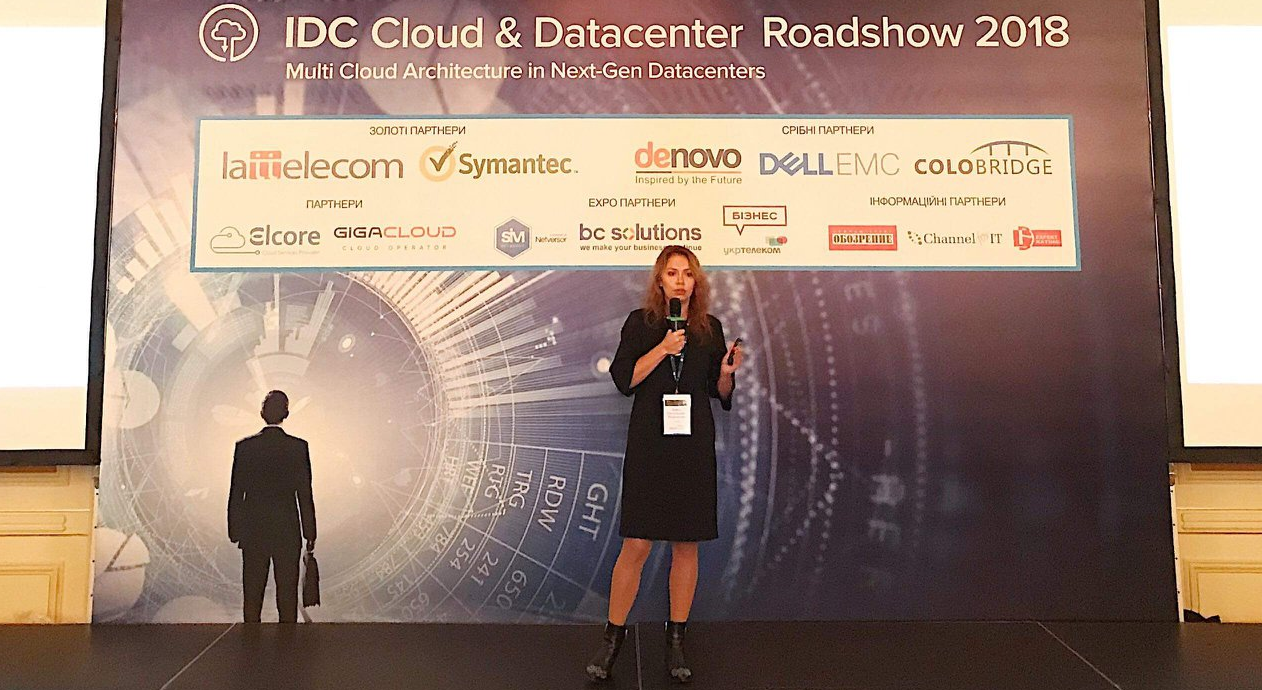Multi- and hybrid clouds continue to grow in popularity as businesses seek to utilise solutions that balance security and flexibility and combine the benefits of on-premises and cloud infrastructures. Discover what is a Hybrid Cloud Strategy and How to Structure an Enterprise Hybrid Cloud Strategy in our article.
- What is Hybrid Cloud Data Strategy?
- How to Develop a Hybrid Cloud Strategy?
- What are the Challenges of a Hybrid Cloud Strategy?
- What are the Benefits of a Hybrid Cloud Strategy?
What is Hybrid Cloud Data Strategy?
Hybrid Cloud can be described as an infrastructure that combines a business’s internal (on-premises) computing resources with the infrastructures of other vendors (cloud service providers). The hybrid cloud strategy is determined by choosing the applications and data that will be placed on-premise and the data that will be placed in the cloud. The most common approach providers use is Infrastructure-as-a-Service (IaaS), a flexible and easily scalable pay-as-you-go solution. Some companies prefer a Private Cloud to a Public Cloud, primarily for security reasons. Hybrid infrastructure can also encompass infrastructure where clouds from two or more providers are used alongside on-premises infrastructure (so-called Multicloud).
According to Flexera, 80% of large companies use a hybrid approach with private and public clouds combined with on-premises infrastructure. Moreover, 97% of CIOs plan to further expand their cloud systems.
A hybrid cloud is often used for disaster recovery (BaaS and DRaaS), to ensure business continuity, and to quickly respond to load spikes when IT services require extra computing resources for a short time.
5 key components for a successful hybrid cloud strategy by Virtana:

How to Develop a Hybrid Cloud Strategy?
First, a company needs to determine the applications that are obsolete and those that are perfectly suitable for a hybrid cloud migration strategy. It is also essential to consider security requirements (both internal and industry-specific), the preferred flexibility of managing various applications in the cloud, and the cost of cloud resources compared to the cost of placing the same workloads on-premises.
To deploy a hybrid cloud strategy, use the principles recommended by Accenture:
- identify applications you no longer need and free up the resources they use;
- identify applications that are impossible or difficult to migrate to the cloud;
- identify applications that can be easily migrated from one environment to another;
- modify (refactor and re-platform) applications to make them easier to deploy and run in the cloud;
- determine the in-house tools that can be replaced with SaaS solutions from leading providers.
What are the Challenges of a Hybrid Cloud Strategy?
Thorough data analysis and evaluation are not the only challenges to implementing a hybrid cloud strategy. Here are some other challenges a company may face:
- challenges in finding suitable applications to migrate to the cloud;
- determining the real amount of operational costs of maintaining cloud infrastructure;
- choosing the suitable provider offering cloud products that will fully address your business needs;
- difficulties in scaling individual applications in a hybrid environment.
What are the Benefits of a Hybrid Cloud Strategy?
None of the challenges listed above is actually a barrier to implementing hybrid infrastructure, which delivers many benefits to businesses.
Ensuring data integrity. The cloud can be used to store data backups or as a disaster recovery site for almost instant recovery and thus ensuring business continuity.
Rapidly introducing innovations. A business can develop, test and deploy new products in a short time frame without having to spend time buying and configuring the corresponding physical infrastructure. Cloud computing resources can be easily obtained within a few hours and used for exactly as long as a new project requires. Moreover, while still using on-premises infrastructure, you can access innovative technologies such as artificial intelligence in the cloud ( for example, AI-Engine as a Service, preconfigured cloud-based solution).
Quickly responding to a changing demand. A spike in activity over the holidays or season sales is easy to handle if a company uses the cloud and can quickly scale computing resources in response to increased loads.
Complying with regional regulatory requirements. A global business can benefit from hybrid infrastructure by placing individual IT applications in clouds owned by local cloud service providers to meet specific regulatory requirements.
Colobridge expert:
“Implementing a hybrid cloud strategy can be a real challenge for companies not primarily focused on IT. In such a case, it is important to get the support of a reliable partner, for example, a cloud service provider. Colobridge offers its clients various options for implementing infrastructures and cloud consulting services that involve selecting applications to migrate to the cloud, designing, implementing, and further maintaining them. With over 13 years of expertise and a wide variety of client cases, we are able to find the best possible solutions wherever it is essential to build a truly productive, flexible and secure hybrid infrastructure”.





